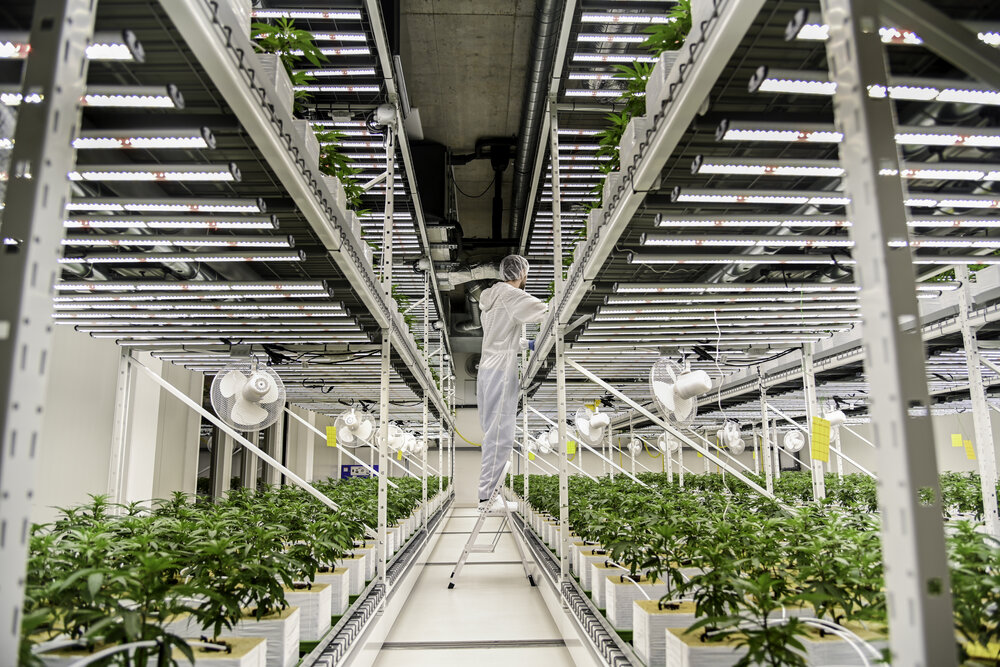It is important to consider the nutrients and health of plants growing in hydroponic systems to increase the overall yield and hydroponic growers are well aware of this fact. Yielding bigger and healthier crops with short harvesting times can be a difficult task, but following these top 6 hydroponics tips, any hydroponic cultivator can get improved yields for increased harvests.
We hope that these tips will help you maximize your yield and if you know this stuff already, it will help support you in performing things the best way.
1. Ensure water quality
Growers should check the water quality before supplying it to the hydroponic system. The pH level indicates the alkali or acid levels in water and is essential to note with a pH meter. Growers want their water to have a pH between 5.5 and 6.5 in many hydroponic systems but the right pH level depends on the plant type grown in the system and the grower’s preferences.
2. Add a fertigation system

Fertigation involves the injection of fertilizers into the irrigation system. It is important to distribute the right fertilizer into the water in the hydroponic system as the plants are growing without the soil media and they only rely on the nutrients and water to survive.
The soil generally gives a buffer for bases, acids, and salts added and without this buffer in the hydroponic system, growers need to be extra careful not to damage the plants with too many chemicals added to the system.
Adding the appropriate fertilizer amount can be difficult because when you mix nutrients into the water supply, there can be a disturbance in the pH levels of water that need to be balanced for the plants to absorb the right quantities of nutrients. It may be appropriate without introducing a fertigation system as the grower will manually add, mix and test, with a trial and error procedure until the right pH level is achieved.
3. Have a growers journal
It can be advantageous to keep a grower’s journal to increase the probability of a successful crop. When you try new nutrients or apply changes to unhealthy or weak crops, it is essential to notice the outcomes to ensure that they are not used again if unsuccessful. This grower journal can be used to note down changes in nutrients, watering, pH levels, lights, and plant health on daily basis.
4. Carefully use CO2 generators

For maximizing plant growth, CO2 generators are great tools but can be dangerous when operated by inexperienced cultivators. If not used properly, severe fires, explosions, and crop death can ruin your garden and risk your safety and your house’s structure. It is suggested to increase the light and plant nutrients when a CO2 generator is functioning. Moreover, it is advisable to measure the conditions in the hydroponic system. Get CO2 generators at Hydroponics Australia.
5. Keeping water levels in control
When it comes to growing plants in hydroponic systems, one of the determining factors is the water levels. Water is required for the growth of plants but lots of water can rot the plant roots that can result in plant death. A grower has to check the water level in the plant after watering to make sure that you added the right amount of water to the plant.
If a plant wilts after watering it is an indication that the plant needs less watering and if the leaves of the plant become livelier, it may need more water. Reverse Osmosis water is the healthiest water for plants as it enables the plants to absorb nutrients efficiently as compared to tap water.
6. Select the appropriate growth medium
Hydroponics systems involve a growth medium in which plant grows and get nutrients from. The right growth medium is the one that ensures a good balance of moisture and oxygen to get them absorbed by the plant roots.
Mostly the combo of coco coir and clay pebbles is used as growing media in hydroponic systems as this mixture sustains the moisture and oxygen at a high level. Another hydroponic growth medium is Rockwool that is often used as it is similar to coco coir. It also has the same moisture and oxygen retaining properties just as coco coir.
Author Bio: –
Asad is a passionate writer and loves to contribute articles to different online blogs and Magazines. He loves to write about Health, Lifestyle, Real Estate, and Home Improvement. He has a personal blog where he writes about House care tips in his free time.






